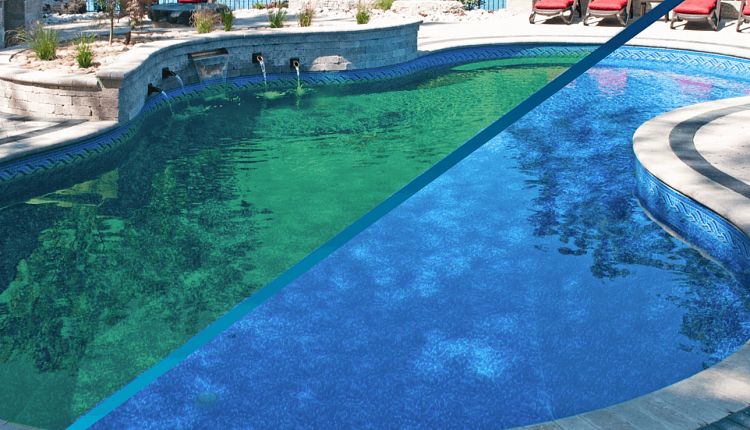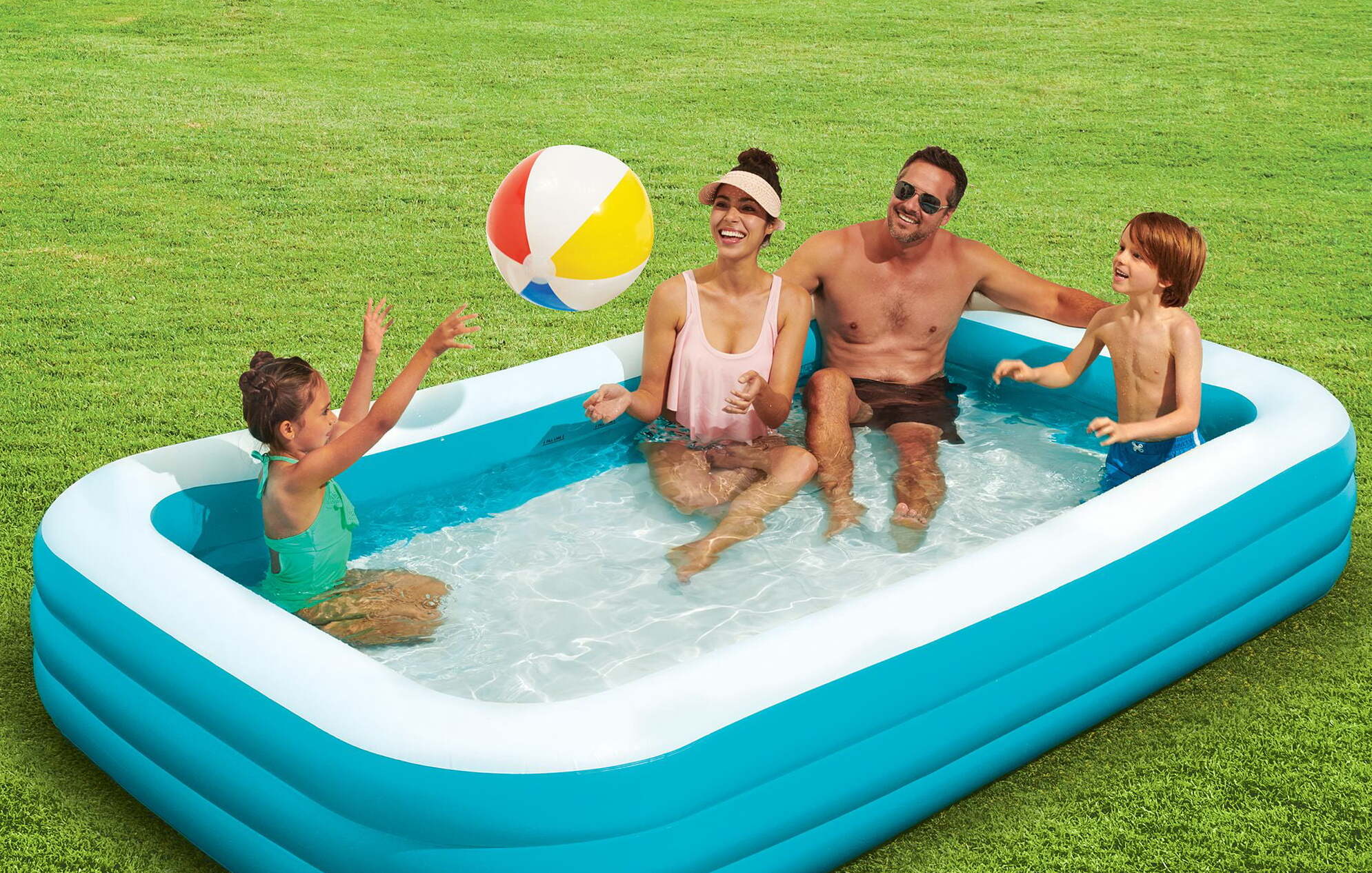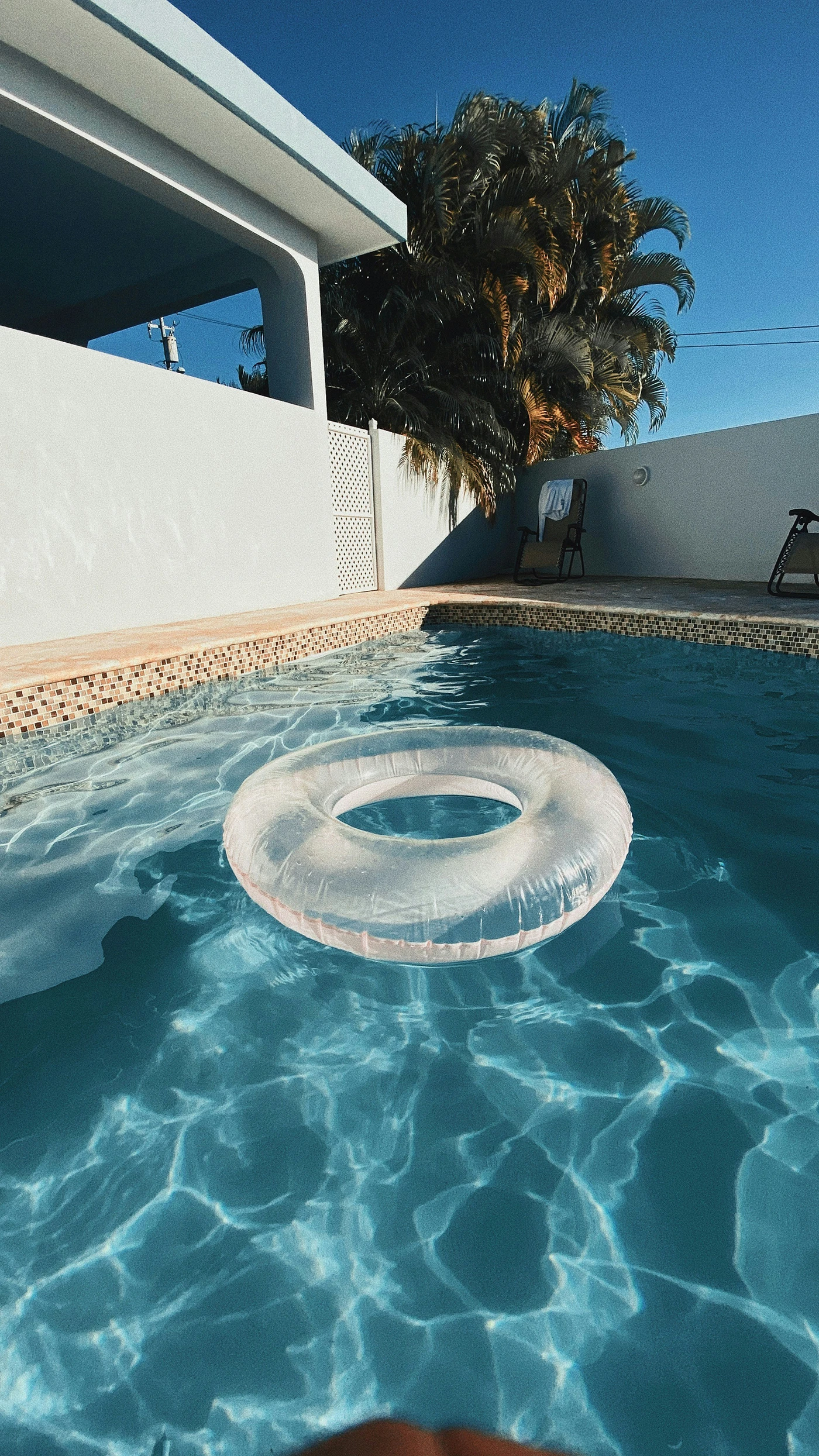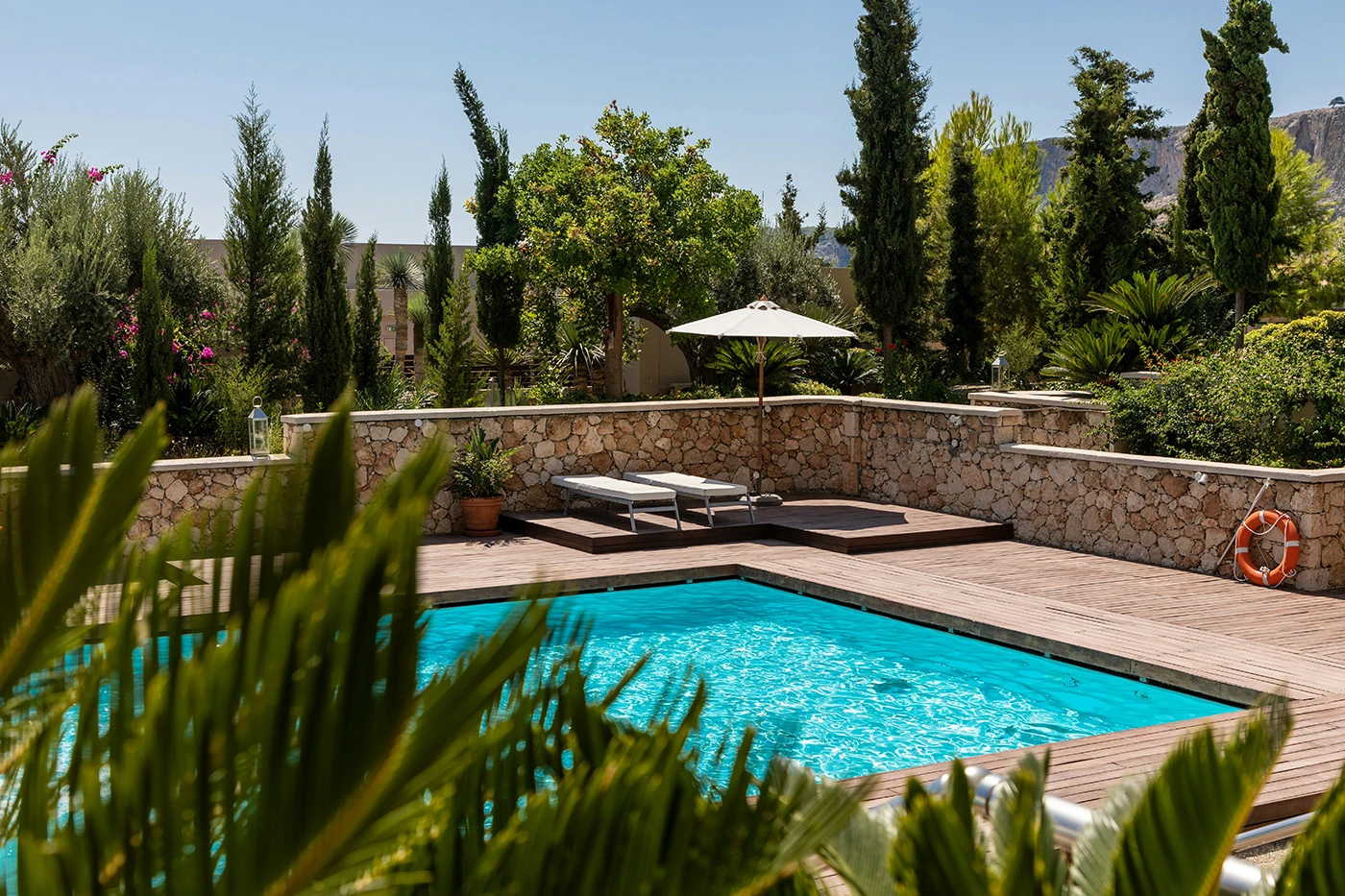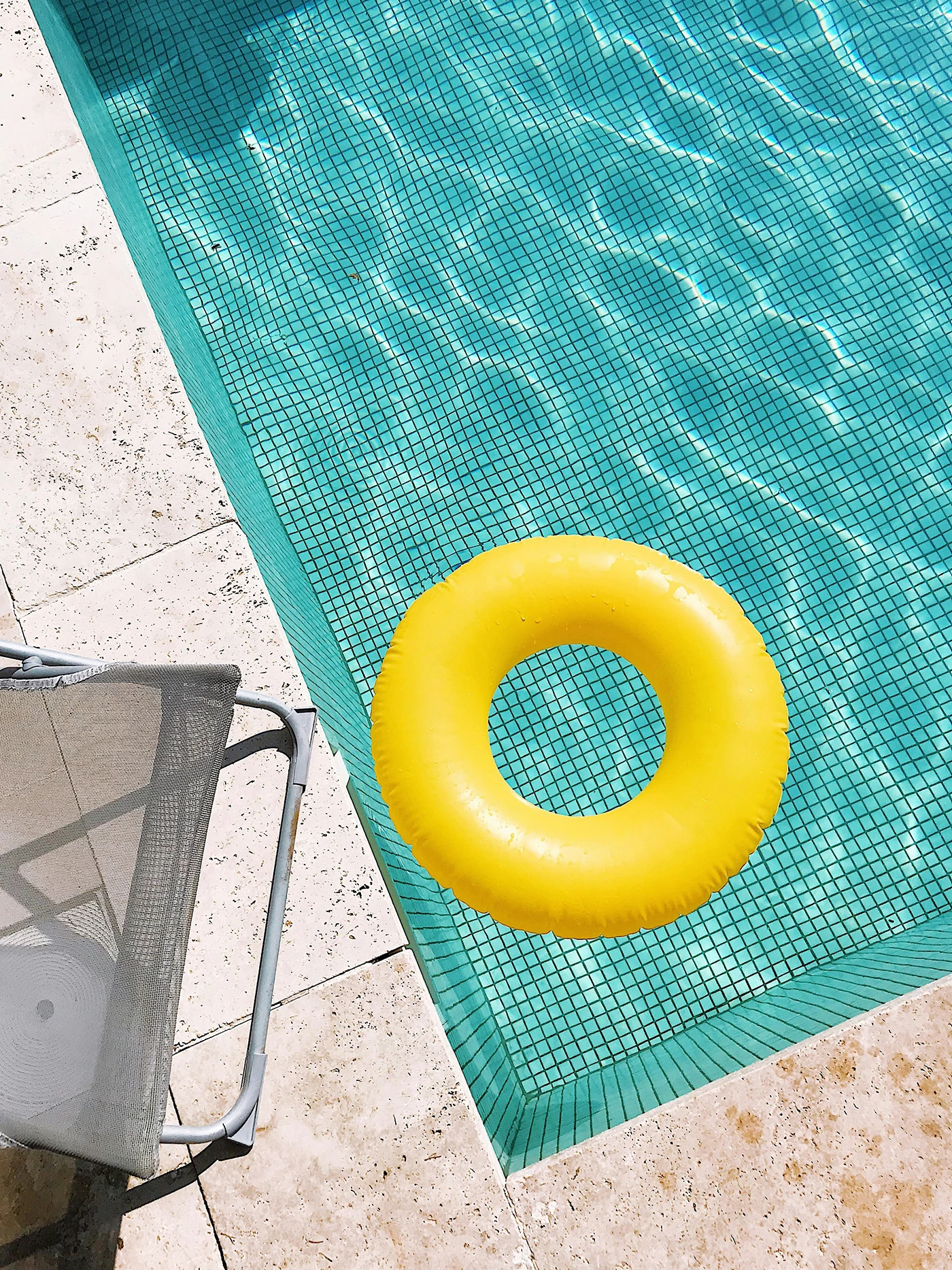What’s more refreshing than a cool dip in a sparkling clean swimming pool? But have you ever wondered about the science that keeps your pool clean and safe? The secret lies in a process called “shocking a pool”, a vital part of maintaining a healthy pool environment.
Key Takeaways
- Pool shocking is essential for keeping swimming pools safe and hygienic by breaking down chloramines, preventing the growth of algae, and killing existing bacteria.
- Regular maintenance routines are necessary to maintain a clean and balanced pool water chemistry.
- Professional pool services provide knowledge & experience needed to ensure optimal safety & hygiene in your pool.
Step-by-Step Guide to Shocking Your Pool
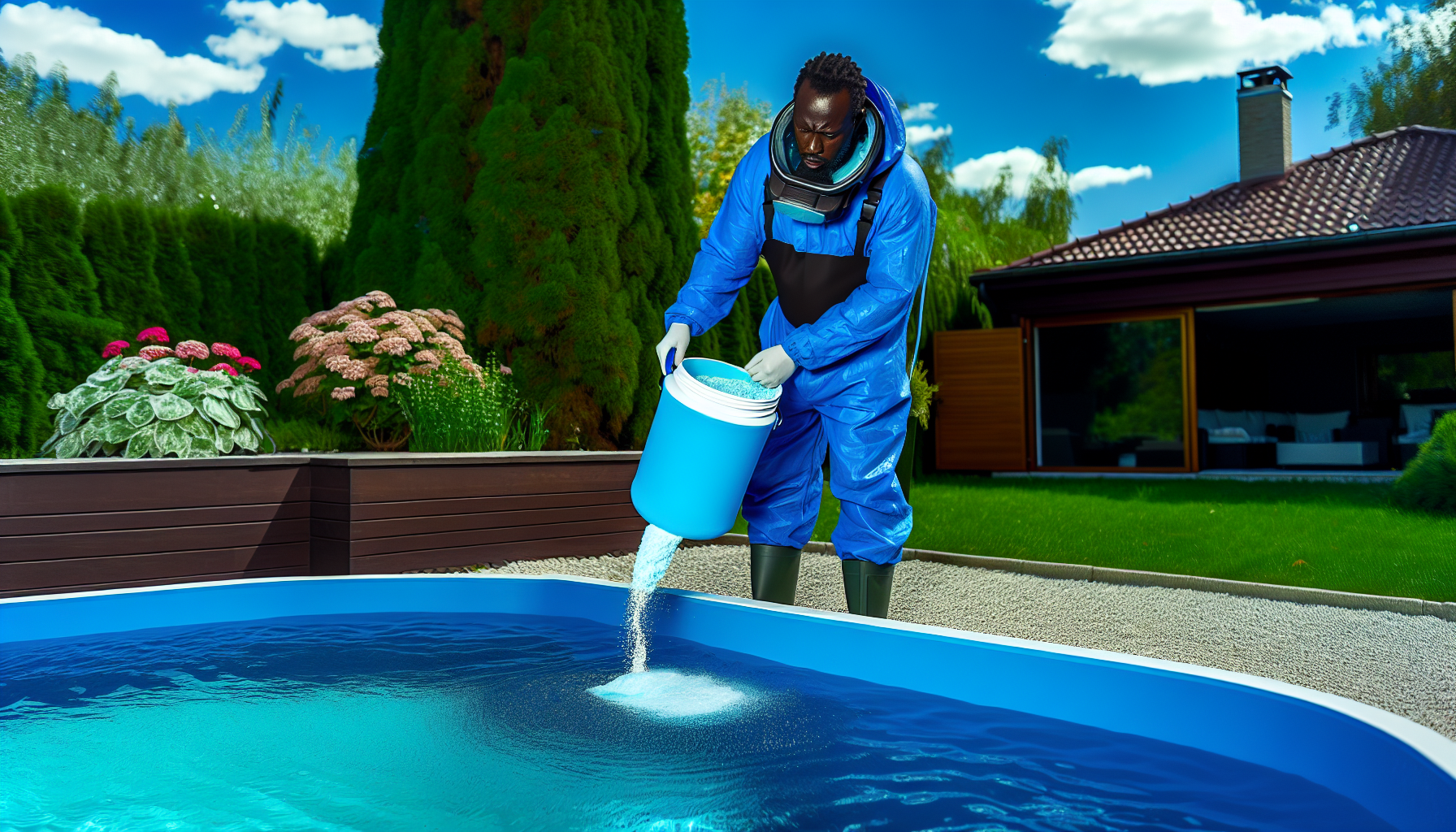
Though pool shocking might seem daunting at first, it becomes a simple procedure once you grasp the steps involved. Begin with testing the water, a vital action before shocking, as it allows you to gauge the levels of free and combined chlorine. The test results will guide you on the appropriate amount of pool shock to use.
After sunset, you can commence the shocking process. It’s recommended to add pool shock in the evening to prevent sunlight from reducing its effectiveness. But before you add the shock, ensure your pool filter is on. Next, follow these steps:
- Dilute the pool shock by filling a bucket to two-thirds capacity with water.
- Gradually add the shock to the bucket.
- Stir the mixture until the shock fully dissolves.
When adding the dissolved shock to your pool, distribute it evenly around the edges in front of the return fitting. This helps to ensure that the shock gets well distributed throughout the pool and prevents the chemicals from settling at the bottom. Bear in mind the extreme importance of safety measures as pool shock can bleach clothes and cause burns to the skin or eyes.
After you’ve added the shock, follow these steps to clear the water and ensure a safe swimming experience:
- Run the filter until the water clears.
- Clean the cartridge filter or backwash sand filters.
- Brush the pool to ensure debris moves towards the skimmer mouth and circulates the shock properly.
- Be patient. The water may get cloudy, which is actually a sign that the pool is responding to the treatment.
- Before swimming again, swimmers should wait until the combined chlorine level falls within the ideal range of 2.0–4.0 ppm.
By following these steps, you can enjoy a clean and clear pool.
Understanding the Need for Pool Shocking
Pool shocking goes beyond maintaining the aesthetic appeal of your pool; it also guarantees the water’s safety and healthiness for swimming. Pool shocking is all about maintaining water quality and preventing the growth of algae and bacteria.
When chlorine reacts with nitrogen compounds like sweat, oils, and urine in your pool, the result is inactive combined chlorine, or chloramines. Using pool chemicals, such as pool shocking, helps to break down these chloramines, improving the water quality.
Additionally, pool shocking is a powerful tool in the fight against algae and bacteria. A strong dose of chlorine added during the shocking process can kill existing algae and halt its development. This is crucial for maintaining a safe and hygienic swimming environment.
The Role of Free Chlorine in Your Pool
Free chlorine plays a crucial role in maintaining the health of your pool. As the active form of chlorine, it’s responsible for disinfecting pool water. In other words, free chlorine is the hero in our pool story, ensuring a healthy swimming environment by effectively sanitizing the water.
Without enough free chlorine, your pool becomes vulnerable to contaminants. This is why maintaining adequate free chlorine levels is so important.
When you shock your pool, you’re essentially giving the free chlorine in your pool a boost, helping it to do its job of breaking down contaminants and controlling algae.
Combating Combined Chlorine and Chlorine Smell
While free chlorine is the hero of our story, combined chlorine, or chloramines, is the villain. Chloramines are responsible for that distinct, unpleasant chlorine smell that can sometimes linger around pools. They can also cause irritation to the skin, eyes, and airways.
But how do these chloramines form? When free chlorine reacts with impurities introduced by swimmers or external factors, chloramines are created. Thankfully, pool shocking can help by oxidizing these chloramines, especially when there are elevated levels of combined chlorine. This process restores the water’s sanitation effectiveness and eliminates the unpleasant chlorine smell.
In other words, to shock a pool is our hero’s secret weapon, helping it defeat the villain and save the day – or in this case, the pool.
Preventing Algae and Bacteria Growth
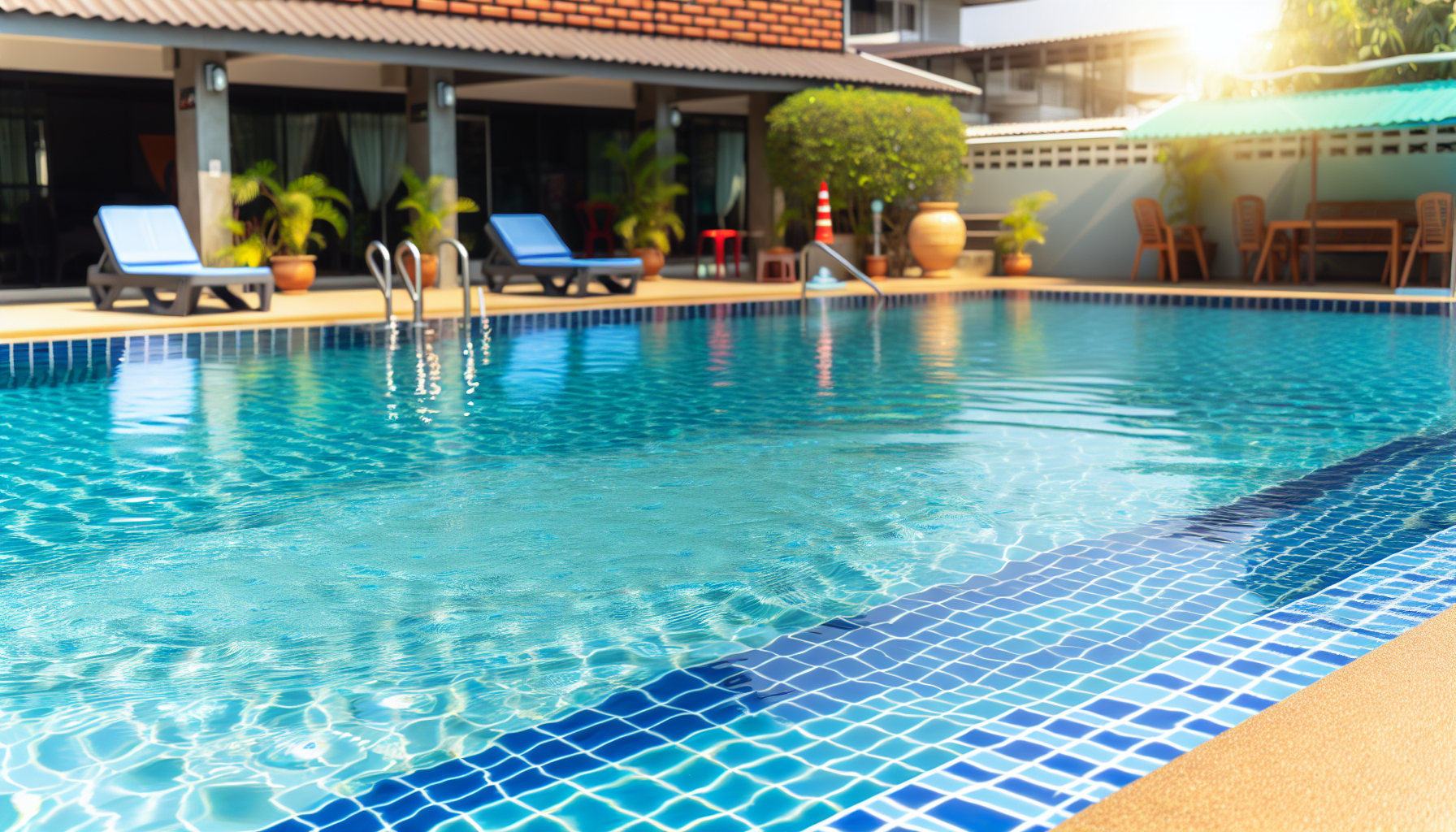
You might think algae in your pool is just a nuisance, but it’s also an indicator of a bigger problem. Algae growth signals that your chlorine levels aren’t high enough to sanitize your pool effectively.
In such scenarios, regular pool shocking proves beneficial. By maintaining the correct chlorine levels in your pool, you can effectively kill algae and bacteria, keeping your water clear and healthy for swimming. In extreme cases, you may even need to double or triple shock your pool to combat algae growth.
Selecting the Right Pool Shock Product
Selecting the appropriate pool shock product is equally significant as the shocking process itself. The right product can help you maintain your pool’s water quality and keep it in tip-top shape.
But how do you choose the right product? It all depends on your pool type and your specific needs. For example, granular shocking products are effective for maintaining saltwater pools. If your pool’s Free Available Chlorine level is below 2.0 ppm, a chlorine-based pool shock would be a good choice to boost chlorine levels and maintain water quality.
However, there are also some considerations to be aware of, such as the increasing scarcity of products like lithium hypochlorite due to manufacturers ceasing production because of the elevated cost of lithium. But don’t worry – products like Leslie’s Chlor Brite offer a great alternative, providing fast-dissolving nature that prevents pH level elevation and water cloudiness.
Calcium Hypochlorite: The Popular Choice
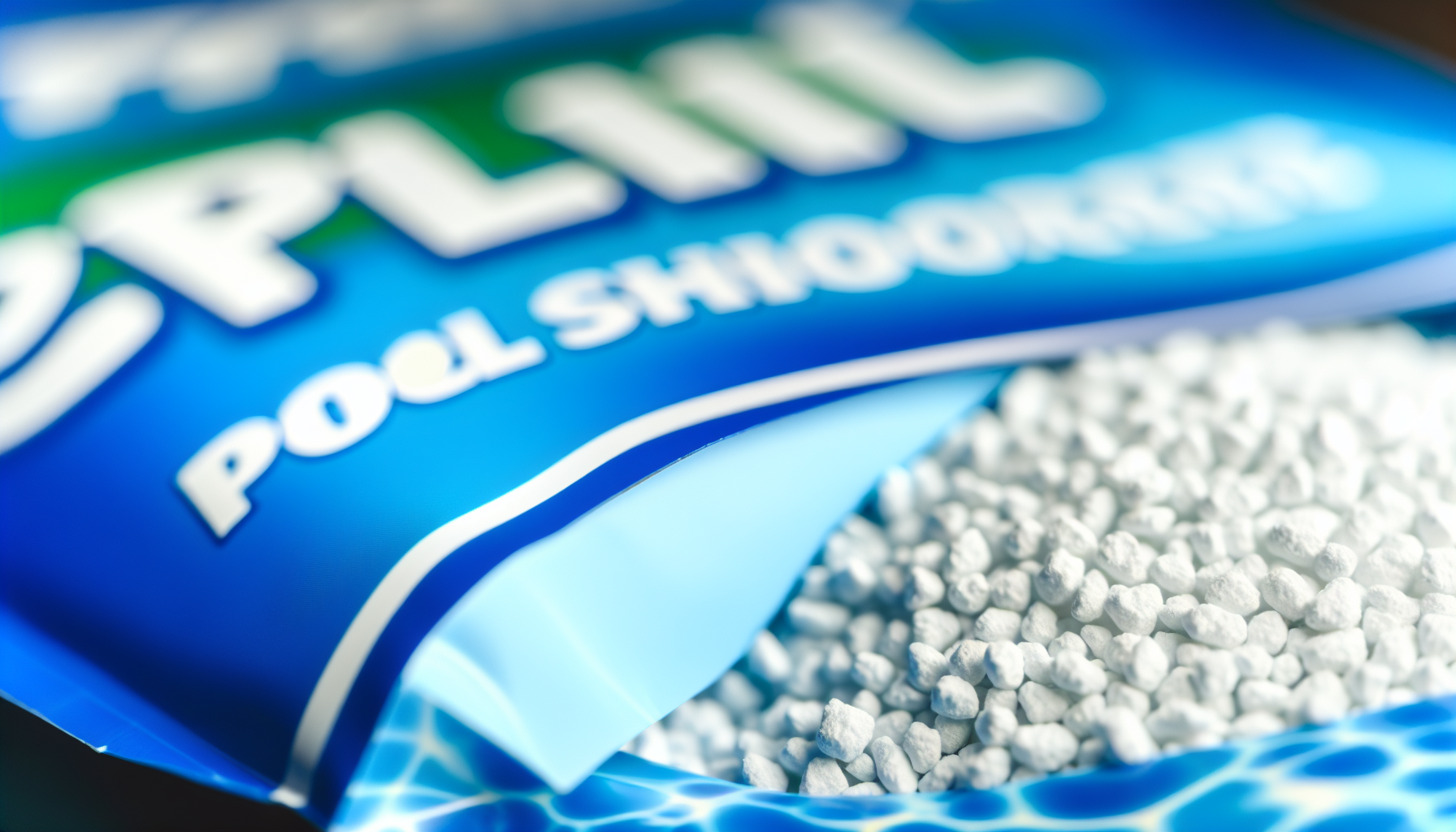
If you’re looking for a popular and effective pool shock option, look no further than calcium hypochlorite, also known as Cal-hypo. It’s been a trusted choice since 1928 and is still widely used today for disinfecting swimming pools and municipal water sources.
One of the advantages of Cal-hypo is that it doesn’t contribute additional Cyanuric Acid to the pool, which is a stabilizer present in trichlor tablets. This makes it an excellent choice for pools that use these tablets as a primary sanitizer. However, it’s important to note that using Cal-hypo can lead to an elevation in calcium levels, so keep this in mind when balancing your water chemistry.
Non-Chlorine Shock Treatments
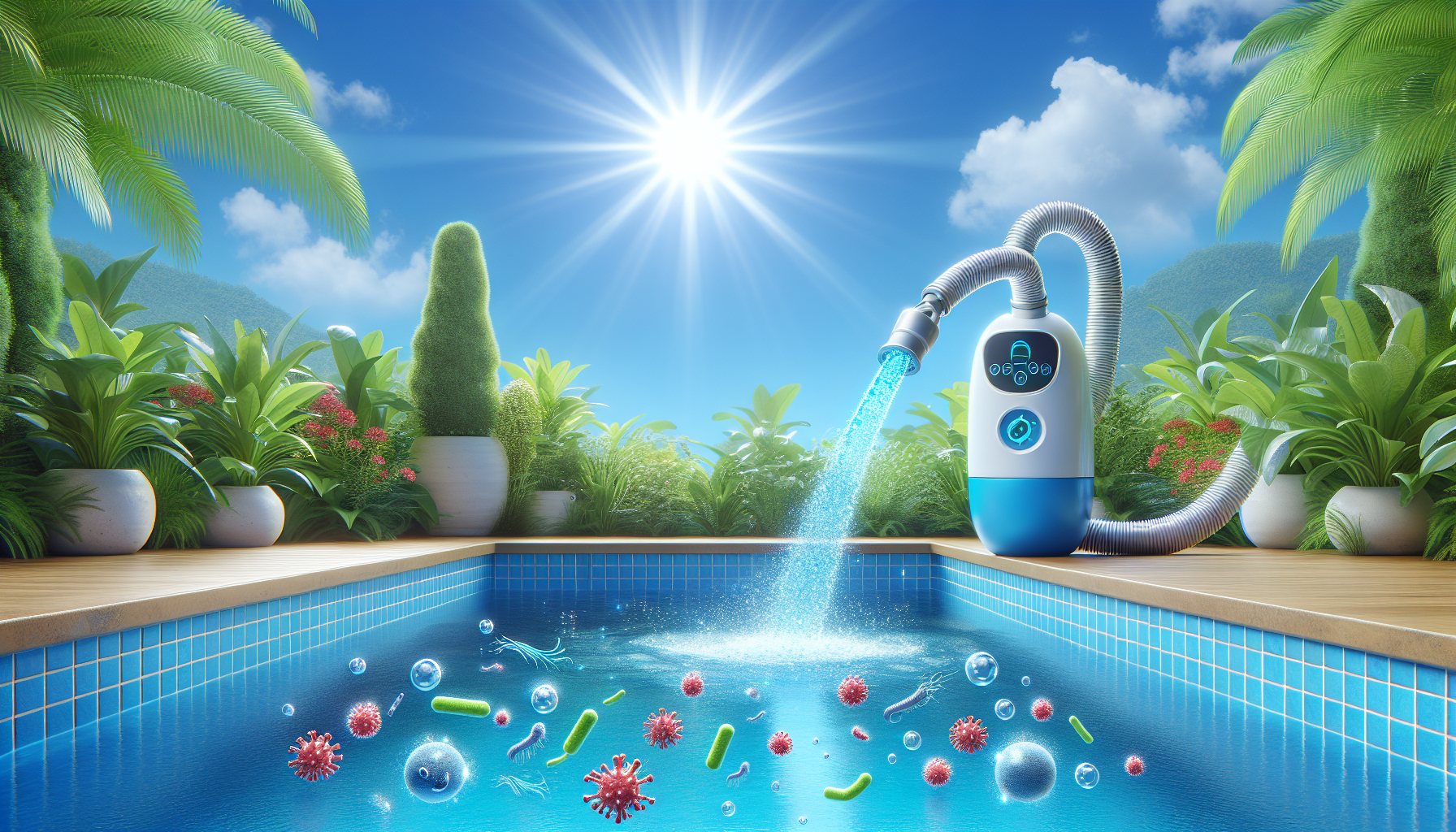
Non-chlorine shock treatments offer an excellent alternative to traditional chlorine-based shocks. These treatments use potassium peroxymonosulfate, a powerful oxidizer, to eliminate bacteria and algae from your pool.
One of the benefits of non-chlorine shock treatments is that they work alongside enzyme treatments to break down non-living organic contaminants in the water. They’re also popular for saltwater pools due to their effectiveness and compatibility with the saline environment.
Understanding Dichlor Shock Options
Another shock option to consider is Dichlor. This type of shock is stabilized and contains Cyanuric Acid (CYA), making it suitable for sanitizing pools.
However, it’s important to note that using Dichlor can result in an excessive buildup of CYA, which can diminish the chlorine’s ability to sanitize effectively. Therefore, Dichlor is not recommended for use in indoor pools, pools with high levels of CYA, or where stabilized chlorine is already used as the primary sanitizer.
Testing and Adjusting Water Chemistry
Prior to shocking your pool, you must test and tweak your water chemistry. Testing your water allows you to measure levels of:
- pH
- chlorine
- alkalinity
- other important parameters
This ensures your pool is safe for swimming and your shock treatment will be effective.
The shocking process can significantly affect your pool’s chemical levels, increasing chlorine levels and potentially affecting pH and alkalinity. After the shock treatment, it’s necessary to test and readjust the chemical levels accordingly.
Preparing and Adding the Shock
In terms of preparing and introducing the shock to your pool, safety ought to be your paramount concern. Always read and follow the safety instructions on the packaging, and wear appropriate personal protective equipment.
It’s also important to properly dissolve the pool shock before adding it to your pool. This ensures the shock is evenly distributed and prevents potential damage to your pool surfaces or equipment.
Post-Shock Procedures
After you’ve shocked your pool, there are a few steps you need to follow to ensure your water is safe for swimming. First, run your pool pump and filter for at least eight hours, ideally for 24 hours or until the water is clear.
Next, you’ll want to test your water’s chlorine level. It should be 3 ppm or lower, and the pH balance should be between 7.4-7.6 before anyone swims in the pool. Remember, safety first!
Timing Your Pool Shock Treatment
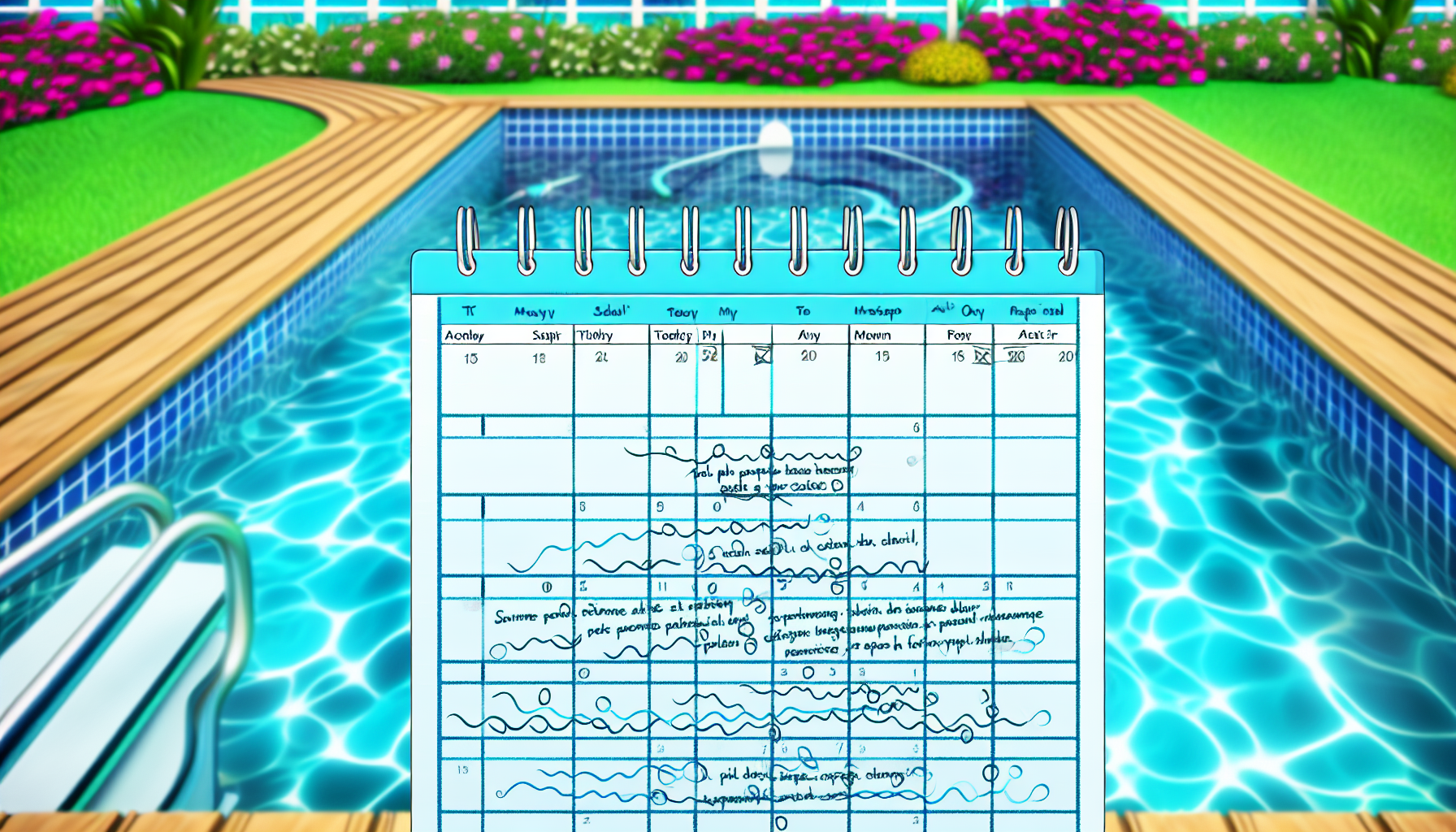
Timing holds utmost significance in the context of pool shocking. It’s not just about how often you shock your pool, but also when you do it. Ideally, you should shock your pool once a week for pools that get daily use. Pools with less activity might only need a shock treatment every other week.
But what about after specific events, like heavy usage or storms? These events can increase the contaminants in your pool, making it more important to shock your pool to restore safe, sanitary water conditions.
In certain circumstances, such as prolonged rain or heavy daily use, it may be advisable to perform a double shock treatment. And if you have a saltwater pool, you may need to increase the frequency of shocking to once a week in these situations.
Regular Maintenance Schedule
Establishing a regular maintenance schedule for pool shocking is key to maintaining water quality. As part of this schedule, it’s recommended to check and balance your pool’s water chemistry at least once a week. If your pool is heavily used, you should increase this frequency accordingly.
The ideal time to shock your pool is in the evening or at night. This is because the absence of the sun’s rays allows the chlorine to more effectively eradicate contaminants, ensuring better water quality by the next day.
After Specific Events
Beyond the regular maintenance, there might be instances that necessitate shocking your pool outside of your routine schedule. For example, if your pool has seen heavy usage or if a storm has brought in debris and contaminants, it’s a good idea to shock your pool to restore water quality.
Storms can introduce contaminants such as phosphates, nitrates, and other organic materials into your pool. In these cases, you may need to use a larger quantity of shock to ensure your pool is clean and safe for swimming.
Maintaining Optimal Pool Health
Ensuring optimal pool health is a blend of regular upkeep, accurate water chemistry, and professional assistance when required. Regular maintenance like skimming, brushing, and vacuuming your pool, as well as checking and balancing your pool’s water chemistry, helps to keep your pool clean and safe for swimming.
In addition to regular maintenance, it’s important to keep your pool’s water chemistry balanced. This includes maintaining the right levels of pH, alkalinity, and chlorine. Unbalanced water chemistry can lead to various problems, including algae growth, cloudy water, and even damage to your pool equipment.
Despite routine upkeep and balanced water chemistry, situations might arise when you require professional help. Whether it’s handling complex maintenance tasks, dealing with stubborn algae growth, or addressing equipment malfunctions, professional pool services can provide the expertise and assistance you need to keep your pool at its best.
Daily and Weekly Maintenance Routines
Routine upkeep is crucial for maintaining your pool’s cleanliness and safety for swimming. Daily tasks like skimming your pool to eliminate debris and ensuring your pump runs for the necessary duration can go a long way towards maintaining your pool’s health.
On a weekly basis, there are a few more tasks that need to be performed. This includes:
- Balancing your water chemistry
- Cleaning your filter
- Vacuuming your pool
- Brushing your pool’s walls
Regular maintenance helps to prevent problems before they start, ensuring your pool stays clean and safe for everyone to enjoy.
Balancing Water Chemistry
Adjusting your pool’s water chemistry is essential to uphold a healthy swimming ambiance. This involves maintaining the correct levels of pH, alkalinity, and chlorine in your pool.
Unbalanced water chemistry can lead to a range of problems. This includes everything from cloudy water and algae growth to skin and eye irritation. Keeping your water chemistry balanced helps to prevent these problems, ensuring your pool is clean and safe for swimming.
Professional Pool Services
Despite routine upkeep and balanced water chemistry, situations might arise when you require professional help. Professional pool services can provide the expertise and assistance you need to keep your pool at its best.
Whether it’s dealing with stubborn algae growth, addressing equipment malfunctions, or handling complex maintenance tasks, professional pool services can help. They offer the following benefits:
- Knowledge and skills necessary to keep your pool clean and safe
- Ability to handle maintenance tasks efficiently
- Expertise in addressing equipment malfunctions
- Experience in dealing with stubborn algae growth
With professional pool services, you can enjoy your pool without the stress of pool maintenance.
Summary
The key to maintaining a healthy and clean swimming pool is regular maintenance, correct water chemistry, and the right shock treatment. By following the steps and tips outlined in this guide, you can keep your pool in tip-top shape, ensuring it’s safe and enjoyable for everyone. Remember, a well-maintained pool is more than just a joy to swim in – it’s a testament to your commitment to safety and cleanliness. So go ahead, dive in, and enjoy the fruits of your labor!
Frequently Asked Questions
When should you shock a pool?
You should aim to shock your pool about once a week, with additional shock after heavy use. Signs that your pool needs to be shocked include cloudy, foamy, green, or odorous water, as well as when algae begin to grow, chlorine levels reach zero, and chloramines/combined chlorine levels rise above 0.5 ppm.
Do you run the pump when shocking pool?
Turn on the pool pump and keep it running for several hours after adding shock to ensure the product reaches all parts of the pool.
What is the best method for shocking a pool?
For best results, use one pound of shock per 10,000 gallons of pool water and turn on the pool pump. Dissolve Calcium Hypochlorite in the pool after dusk for efficient dispersal of chlorine into the water. Run the pool pump for at least 8 hours to ensure adequate distribution of the shock.
Is shock and chlorine the same thing?
No, shock and chlorine are not the same thing. Chlorine is used as a sanitizer for pool maintenance, while shock is a high dose of chlorine meant to raise chlorine levels quickly.
How often should I shock my pool?
You should shock your pool once a week if it gets daily use, otherwise every other week.

